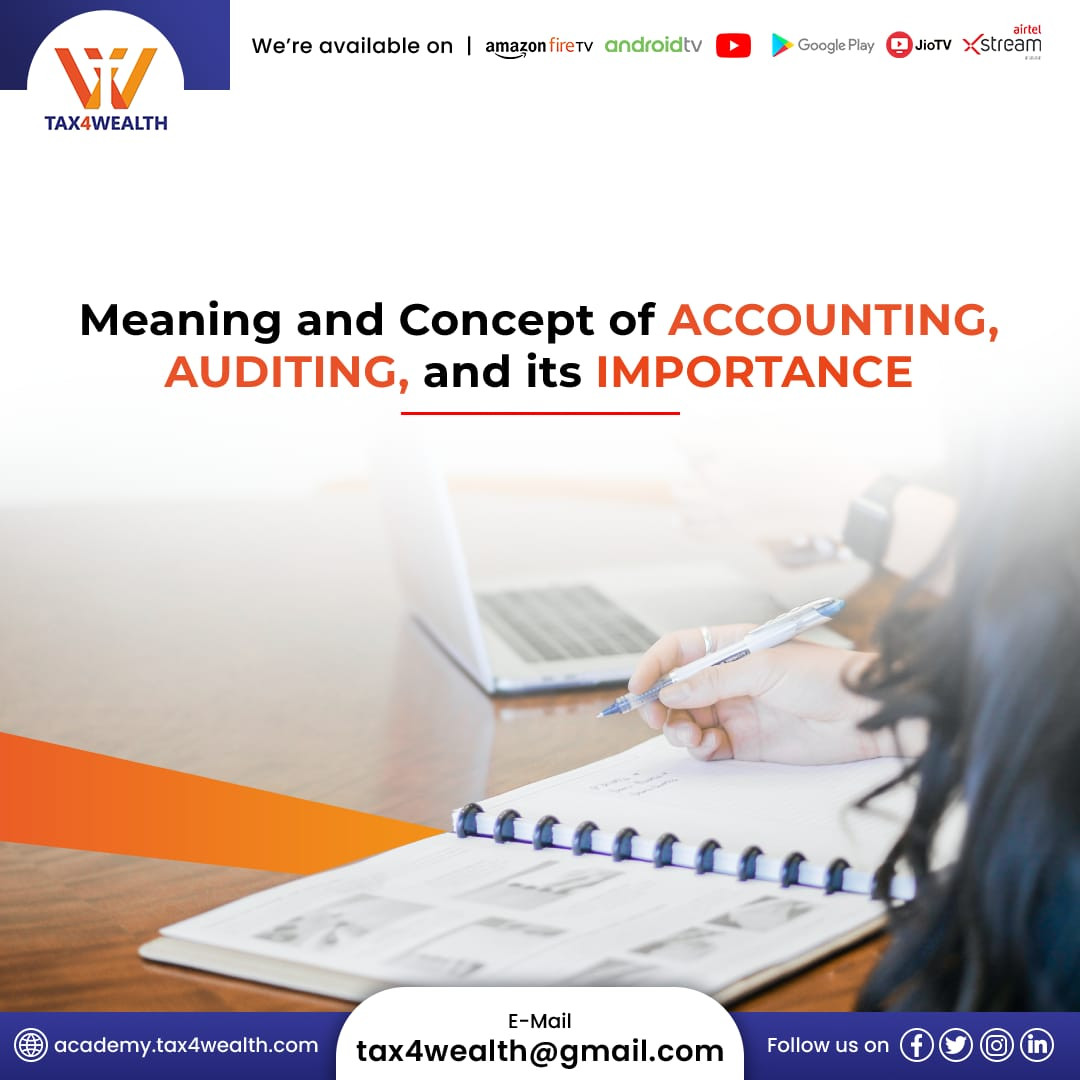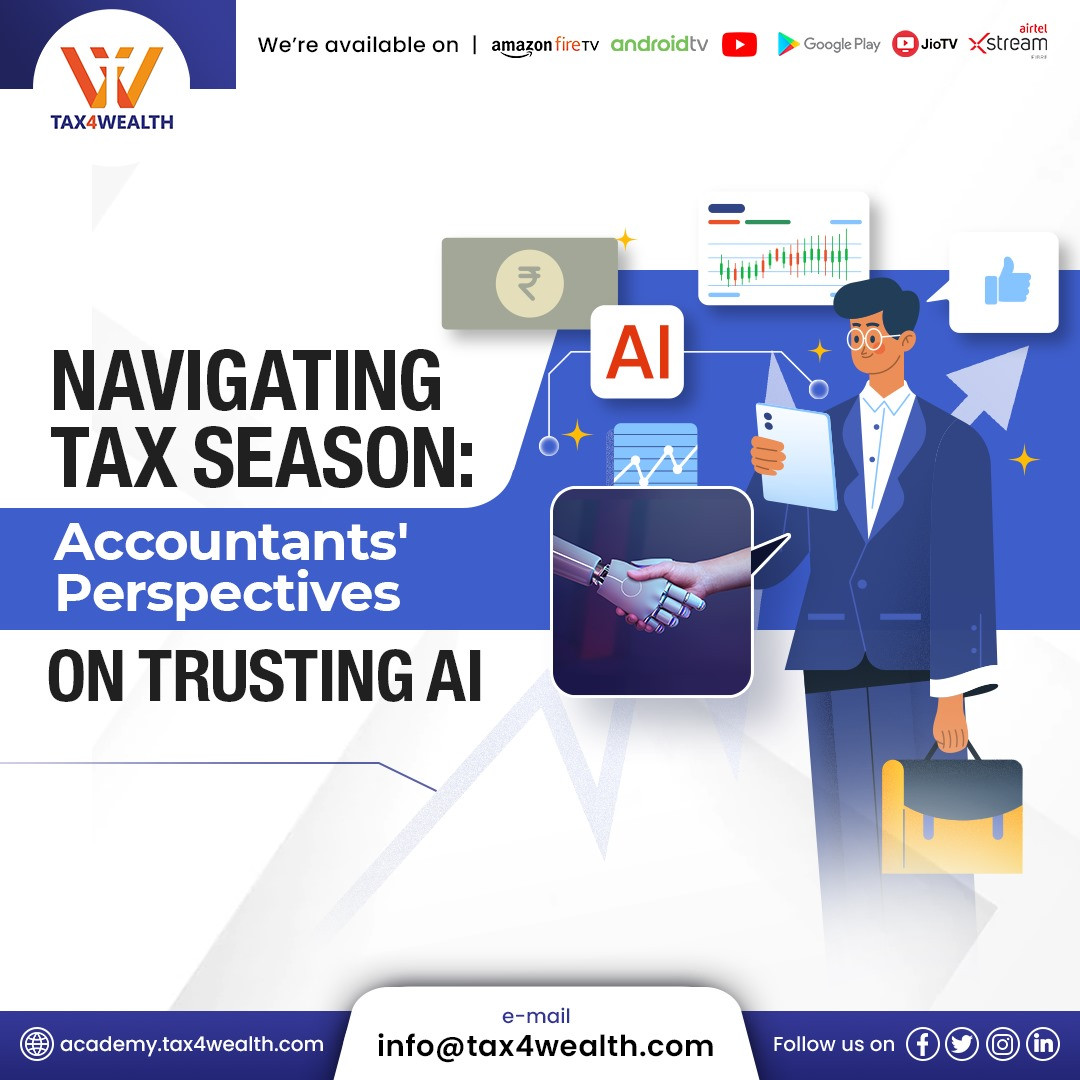
Coaching Classes vs Practical Training- What's The Difference ?
It might be challenging to decide whether to acquire methods through private coaching, online instruction, or both. Let’s compare coaching classes to online practical training to see which is better for you.
More than a year has passed since Covid-19 first started to affect our life. The majority of our daily activities are still governed and subject to change as a result of the havoc Covid-19 continues to cause.
It is a recognized truth that this dangerous virus has fundamentally altered India's educational landscape. There was scarcely any time for the education system to adapt to the modern era.
Learning abruptly switched to "Online Classrooms" in India and the rest of the globe from teaching in actual physical classrooms. We attempt to highlight the key distinctions between practical training and coaching classes in this Article.
"Academy Tax4wealth is an interactive e-learning platform providing video-based courses with practical training related to subjects in finance, Income Tax, and Wealth Management online."
People frequently confuse the phrases coaching and practical training because they believe they may be used for the same thing, which is untrue. They are two quite distinct approaches, so you should decide on one to apply based on your goals and the desired outcome. To further understand the distinctions, let's examine each one independently.
The Concept of Practical Training:
With the aid of learning programs, the learning and development industry places a lot of emphasis on the training procedures and the professional and personal growth of students. The need to close knowledge and skill development gaps and provide students with all the resources and knowledge they need to carry out their daily tasks typically motivates businesses to invest in learning programs. Practical Training should focus on learning and should impart new information and skills. It should also generally be organized.
The Concept of Coaching:
Contrarily, coaching is utilized to assist individuals in taking action and overcoming specific professional barriers that are keeping them stationary. When compared to a training program, coaching differs in that it emphasizes development, supports decision-making, and is utilized to boost performance without being officially organized.
What Is the Difference Between Practical Training and Coaching Classes?
The phrases "coaching classes" and "practical training" are sometimes used interchangeably in companies. These encounters are led by individuals with the titles of coach, trainer, or a combination of the two. They often only perform one or the other, never both. But it doesn't mean they couldn't do both. Both are essential to a mixed learning strategy, which is what is advised.
The fact that so many people automatically choose one option over the other is due to their ignorance of the distinctions.
"Academy Tax4wealth is an e-learning platform providing video-based courses with practical training and 100% job guaranteed courses related to subjects in finance, Income Tax, and Wealth Management online."
10 key distinctions between coaching classes and practical training:
- Organizational objectives are emphasized in practical training. Individual goals are the main emphasis of coaching.
- Groups frequently receive practical training. Coaching is one-on-one.
- Practical Training is the same for everyone who participates, even if it is provided at various times. Each participant's coaching experiences are different.
- Before delivery, training is planned or chosen to enhance particular abilities. Coaching makes it easier to determine which competencies require more work.
- Information is pushed to participants during training by the teacher/expert. The participants' information is gathered by the coaches.
- Knowledge transmission is the aim of instruction. Behavior modification is the aim of coaching.
- When training a group, it's assumed that everyone has the same starting point. Finding a person's baseline and working up from there is how coaching starts.
- The purpose of practical training is to improve knowledge and abilities. Self-awareness of attitudes, actions, choices, and development requirements is intended to grow via coaching.
- Trainers get practical training in presenting techniques, instructional design, adult learning theory, and facilitation. Coaches acquire abilities in questioning and listening.
- One-way training is an option (but it's not recommended). However, coaching requires the coach to be open to receiving feedback from the individual they are coaching.
How to Tell When Practical Training Is the Best Solution?
Practical Training is usually the greatest option, despite being effective (since it offers something to many people at once).
Practical Training always produces the intended and quantifiable results, despite being readily available online and in numerous versions.
Refrain from conducting a training session; instead, check the box and continue. The selection of the appropriate training, obtaining training delivery that is efficient for your particular group's and organization's needs and sustaining training over time entail much more.
Choose to Coach When:
- People plan their growth and establish improvement objectives.
- People encounter actual or imagined barriers to their achievement or progress.
- You want to increase workers' competency, self-assurance, and autonomy.
- Workers are receptive to the notion of altering their conduct to further their objectives.
- Individual action plans and reinforcement of training-related skills are required for adoption.
Choose practical training when:
- Every member of the group must be given the same information.
- A new employee must first complete basic training before establishing personal learning and development objectives.
- Group dynamics will aid in the adoption and learning of new skills.
- It's also crucial to have a secondary goal for team development or shared experiences. The same skills disparities exist among many persons and are well-defined.
Practical Training and coaching are two of the most effective methods for learning and growth. By offering both, you may offer a wide range of support to quicken employee and student growth.
Some Examples of Difference Between Practical Training and Coaching:
Although the phrases "Coaching Classes" and "Practical Training" are sometimes used interchangeably, they are not the same thing. Training and coaching both require learning and teaching in a larger sense. A deeper examination reveals that the two terminologies have various connotations and differing functions.
Coaching is the act of developing already-existing knowledge and abilities. Training is the process of imparting new knowledge, information, or skills to a person.
Knowledge Enhancement vs. Knowledge Transfer:
The fundamental purpose of practical training is to introduce a person to a skill or idea that they are unfamiliar with. For instance, a new hire who has never used the software before will receive comprehensive training.
On the other hand, coaching involves assisting a person in enhancing an already-existing talent.
Expertise vs. Skill:
One of the most fundamental distinctions between coaching and training is this one. Cricket is taught to schoolchildren by a sports instructor. He teaches both the precise techniques needed to play the game as well as its fundamental laws. That's instruction.
A personal coach is sought out by a cricket player who is already proficient but wants to improve. When professional coaches, improve a student's performance.
Standard Procedure vs. Customized Method:
A group of students who are interested in learning a given subject or ability often receive practical training. A consistent learning approach, or curriculum, is created to guarantee that the skill is taught identically to all students and within a certain amount of time.
On the other hand, coaching often has a customized framework where the coach and the student communicate one on one. There isn't a set curriculum or program established for such a situation. Over a long period, the coach uses a customized strategy to help the student's skill sets.
Intangible vs. Measurable:
Usually, there are means to assess a student's development during training. Through an evaluation, a test, or an assignment, for example.
Coaching, though, is intangible. It is impossible to quantify, but it may be understood by the coach's professional comments on whether a person is getting better and increasing his talents.
Process: Short-Term vs. Long-Term:
Typically, practical training is done for a set amount of time. It can take a few hours or several months. For instance, newly hired employees in an organization receive formal training for a few months to acquaint them with the work procedures and regulations of the firm.
Coaching, on the other hand, is a prolonged process. It continues over a longer period until someone achieves mastery in their field. In coaching, a senior expert continuously advises a current employee on how to perform effectively and advance in his career.
The difference between the two words is subtle. Coaching focuses on improving the application of the same skills that training does. Although practical training and coaching are two separate ideas, they work together to maximize potential.
Related News
No comments yet, Be the first to comment.













